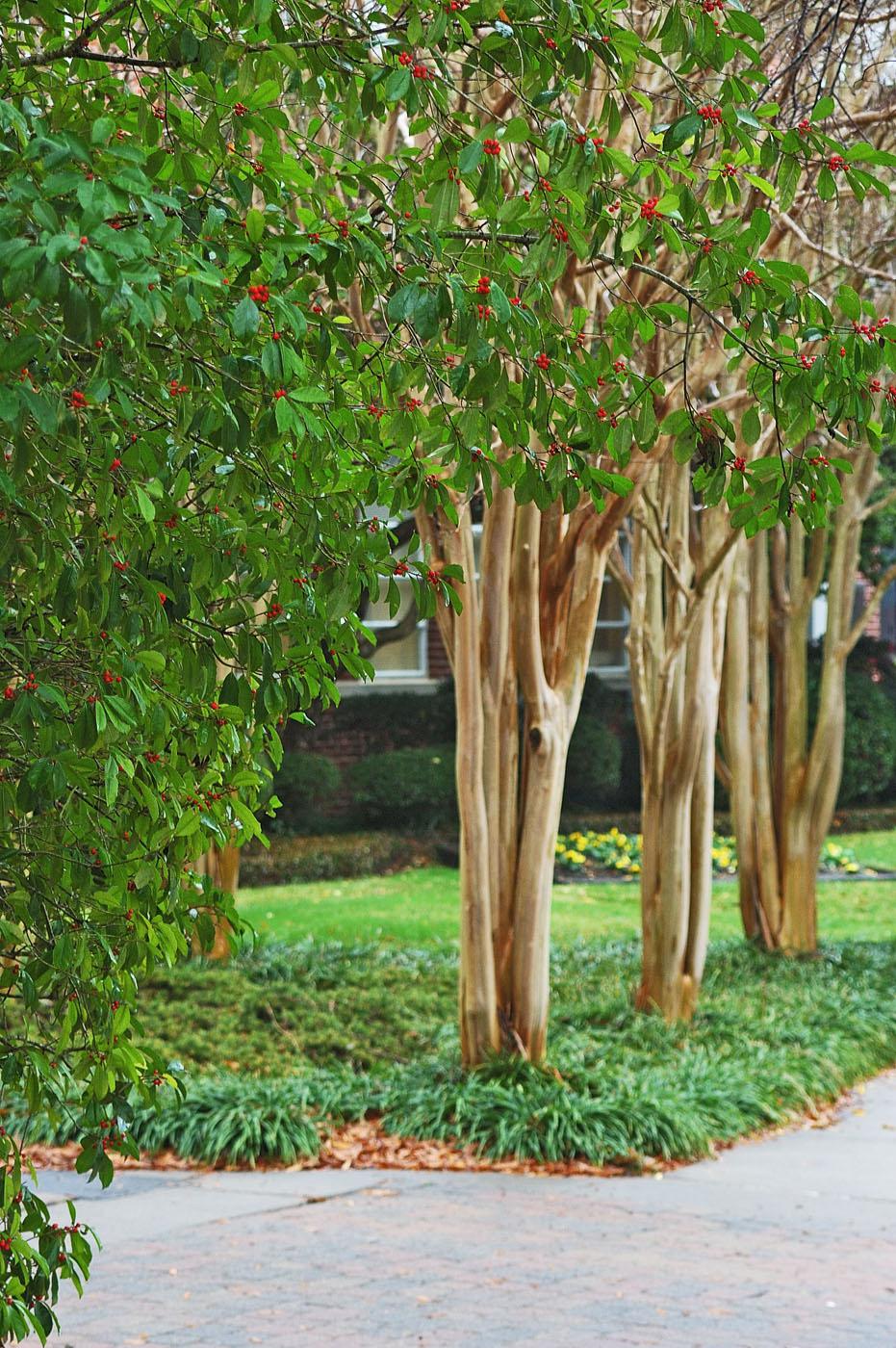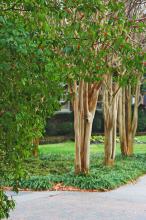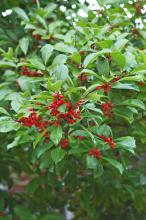Information Possibly Outdated
The information presented on this page was originally released on January 8, 2009. It may not be outdated, but please search our site for more current information. If you plan to quote or reference this information in a publication, please check with the Extension specialist or author before proceeding.
Use bones, berries, bark in winter landscapes
By Norman Winter
MSU Horticulturist
Central Mississippi Research & Extension Center
A lot of people dread winter because the landscape starts looking a little like Siberia, but it doesn't have to be that way if you remember the “three Bs”: bones, berries and bark.
The bones are the evergreen shrubs that serve as the structural foundation of the garden. Winter landscapes can look lush and alive when we incorporate evergreen shrubs in repetitive layers throughout the garden. Make the landscape look good in January and all of the other months will fall into place like dominoes.
Some of our best evergreens are ligustrums, camellias, cleyera and hollies. Plan to incorporate some conifers like chamaecyparis or falsecypress, junipers and cedars. Natives can play an important role. A couple of my personal favorites are the Southern wax myrtle and the Eastern red cedar, the “Christmas tree of the South.” About 40 species of birds eat the small, blue berries on the wax myrtle, while the fruit on the Eastern red cedar is eaten by 20 species of birds.
This brings us to our second “B,” which is for berries. Hollies are a great choice for this. They are weather-tough, and the bright red berries of native hollies like the American, the yaupon and the possum haw provide color and food for birds.
The American holly stands tall and statuesque in the winter landscape with its deep green leaves, and it looks like it has been carefully decorated with just the right amount of bright red berries. The berries are dinner for 18 species of birds, while the yaupon and possum haw feed seven and nine species, respectively.
The native parsley hawthorn may have more berries than any other plant. It gets its name from the leaves that do indeed look like parsley. In addition to providing berries for birds, the twiggy top structure also provides good nesting opportunities.
Another great choice for berries and winter leaf color is the nandina. Also called “heavenly bamboo,” the nandina loads up with hanging panicles of bright red berries.
So far we've covered “B” for bones, or evergreen foundation plants, and “B” for berries. Now consider the importance of the last “B,” which stands for bark.
I recently wrote about the native river birch and how it stands out with its exfoliating bark. These papery sheets reveal white to salmon-colored inner bark.
But also notice how old crape myrtles look so picturesque with their smooth, shiny bark that creates a great winter texture and interest. Many newer varieties have bark that is mottled in color and exfoliating. Varieties like Natchez, Biloxi and Kiowa are known for richly colored winter wood.
One of my favorites for bark is the Drake lacebark elm. This wood looks like the perfect template for a camouflage design with gray, brown and orange. It not only has good-looking bark, but it is ruggedly tough in the landscape.
The winter landscape doesn't have to look like the frozen tundra. It can be a real showplace if you have the three Bs: bones of evergreen foundation plants, berries and bark.









